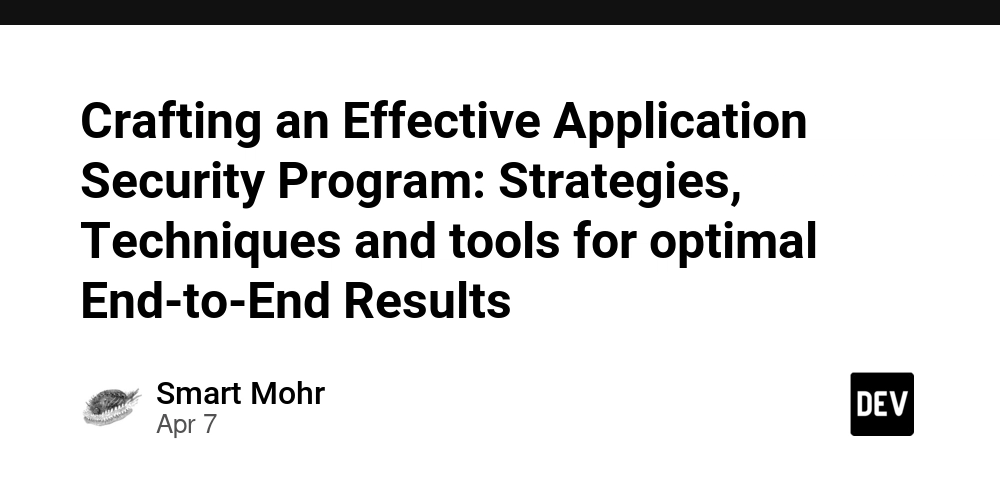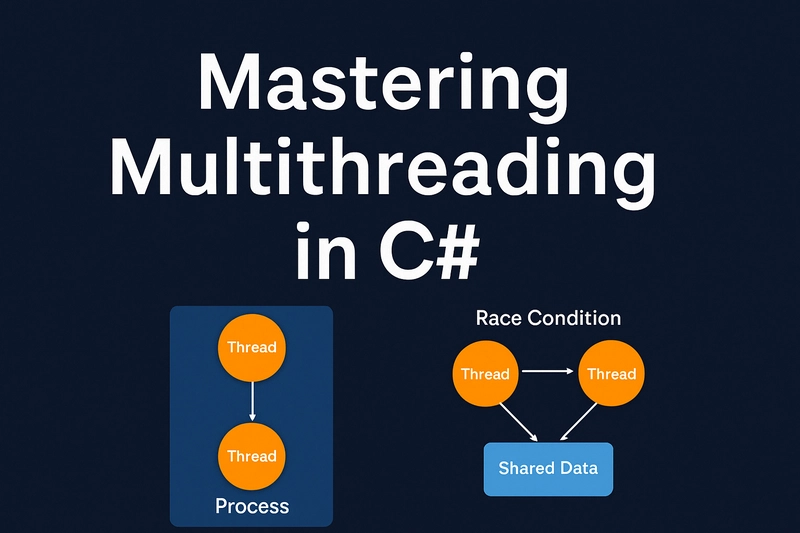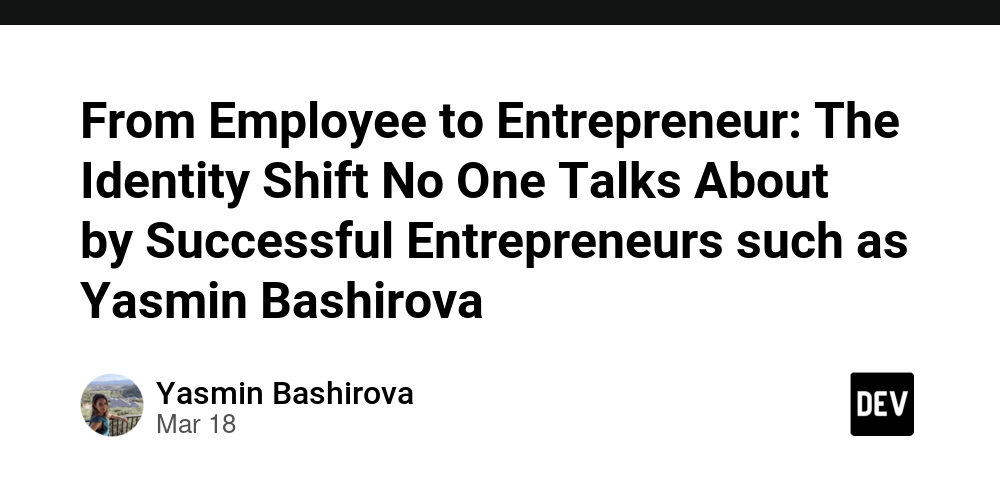Crafting an Effective Application Security Program: Strategies, Techniques and tools for optimal End-to-End Results
Navigating the complexities of contemporary software development necessitates an extensive, multi-faceted approach to security of applications (AppSec) that goes far beyond simple vulnerability scanning and remediation. The ever-evolving threat landscape, coupled with the rapid pace of development and the growing complexity of software architectures requires a holistic and proactive strategy that seamlessly integrates security into every stage of the development process. This comprehensive guide explores the essential components, best practices, and cutting-edge technologies that underpin the highly efficient AppSec program, empowering organizations to protect their software assets, reduce threats, and promote a culture of security first development. The underlying principle of a successful AppSec program is an important shift in perspective that sees security as an integral part of the process of development, rather than a thoughtless or separate endeavor. This paradigm shift requires close collaboration between developers, security, operations, and the rest of the personnel. It eliminates silos and fosters a sense shared responsibility, and fosters an open approach to the security of applications that are created, deployed or maintain. DevSecOps lets organizations integrate security into their development workflows. It ensures that security is taken care of in all phases of development, from concept, design, and deployment up to the ongoing maintenance. The key to this approach is the creation of clear security policies, standards, and guidelines that establish a framework for safe coding practices, risk modeling, and vulnerability management. These policies must be based on industry best practices such as the OWASP top ten, NIST guidelines and the CWE. They must be mindful of the distinct requirements and risk profiles of an organization's applications as well as the context of business. The policies can be codified and made accessible to all interested parties, so that organizations can be able to have a consistent, standard security strategy across their entire range of applications. In order to implement these policies and make them practical for development teams, it's essential to invest in comprehensive security training and education programs. These initiatives must provide developers with the necessary knowledge and abilities to write secure software and identify weaknesses and follow best practices for security throughout the process of development. Training should cover a wide variety of subjects such as secure coding techniques and the most common attack vectors, to threat modeling and security architecture design principles. The best organizations can lay a strong foundation for AppSec by encouraging an environment that encourages ongoing learning and providing developers with the resources and tools they need to integrate security in their work. Alongside training organisations must also put in place rigorous security testing and validation processes to identify and address vulnerabilities before they can be exploited by malicious actors. This is a multi-layered process that includes static and dynamic analysis methods along with manual penetration testing and code reviews. The development phase is in its early phases static Application Security Testing tools (SAST) are a great tool to identify vulnerabilities such as SQL Injection, Cross-Site scripting (XSS) and buffer overflows. Dynamic Application Security Testing (DAST) tools, on the other hand are able to simulate attacks against running software, and identify vulnerabilities which aren't detectable using static analysis on its own. While these automated testing tools are vital in identifying vulnerabilities that could be exploited at an escalating rate, they're not a silver bullet. Manual penetration tests and code reviews by skilled security professionals are also critical in identifying more complex business logic-related weaknesses that automated tools might miss. When you combine automated testing with manual validation, organizations can gain a better understanding of their application's security status and make a decision on the best remediation strategy based upon the impact and severity of identified vulnerabilities. In order to further increase the effectiveness of an AppSec program, businesses should look into leveraging advanced technologies like artificial intelligence (AI) and machine learning (ML) to boost their security testing and vulnerability management capabilities. AI-powered tools are able examine large amounts of data from applications and code and detect patterns and anomalies that could indicate security concerns. They can also enhance their ability to identify and stop new threats through learning from vulnerabilities that have been exploited and previous attack patterns. Code property graphs are an exciting AI application in AppSec. They can be used to detect and repair vulnerabilities more preci

Navigating the complexities of contemporary software development necessitates an extensive, multi-faceted approach to security of applications (AppSec) that goes far beyond simple vulnerability scanning and remediation. The ever-evolving threat landscape, coupled with the rapid pace of development and the growing complexity of software architectures requires a holistic and proactive strategy that seamlessly integrates security into every stage of the development process. This comprehensive guide explores the essential components, best practices, and cutting-edge technologies that underpin the highly efficient AppSec program, empowering organizations to protect their software assets, reduce threats, and promote a culture of security first development.
The underlying principle of a successful AppSec program is an important shift in perspective that sees security as an integral part of the process of development, rather than a thoughtless or separate endeavor. This paradigm shift requires close collaboration between developers, security, operations, and the rest of the personnel. It eliminates silos and fosters a sense shared responsibility, and fosters an open approach to the security of applications that are created, deployed or maintain. DevSecOps lets organizations integrate security into their development workflows. It ensures that security is taken care of in all phases of development, from concept, design, and deployment up to the ongoing maintenance.
The key to this approach is the creation of clear security policies, standards, and guidelines that establish a framework for safe coding practices, risk modeling, and vulnerability management. These policies must be based on industry best practices such as the OWASP top ten, NIST guidelines and the CWE. They must be mindful of the distinct requirements and risk profiles of an organization's applications as well as the context of business. The policies can be codified and made accessible to all interested parties, so that organizations can be able to have a consistent, standard security strategy across their entire range of applications.
In order to implement these policies and make them practical for development teams, it's essential to invest in comprehensive security training and education programs. These initiatives must provide developers with the necessary knowledge and abilities to write secure software and identify weaknesses and follow best practices for security throughout the process of development. Training should cover a wide variety of subjects such as secure coding techniques and the most common attack vectors, to threat modeling and security architecture design principles. The best organizations can lay a strong foundation for AppSec by encouraging an environment that encourages ongoing learning and providing developers with the resources and tools they need to integrate security in their work.
Alongside training organisations must also put in place rigorous security testing and validation processes to identify and address vulnerabilities before they can be exploited by malicious actors. This is a multi-layered process that includes static and dynamic analysis methods along with manual penetration testing and code reviews. The development phase is in its early phases static Application Security Testing tools (SAST) are a great tool to identify vulnerabilities such as SQL Injection, Cross-Site scripting (XSS) and buffer overflows. Dynamic Application Security Testing (DAST) tools, on the other hand are able to simulate attacks against running software, and identify vulnerabilities which aren't detectable using static analysis on its own.
While these automated testing tools are vital in identifying vulnerabilities that could be exploited at an escalating rate, they're not a silver bullet. Manual penetration tests and code reviews by skilled security professionals are also critical in identifying more complex business logic-related weaknesses that automated tools might miss. When you combine automated testing with manual validation, organizations can gain a better understanding of their application's security status and make a decision on the best remediation strategy based upon the impact and severity of identified vulnerabilities.
In order to further increase the effectiveness of an AppSec program, businesses should look into leveraging advanced technologies like artificial intelligence (AI) and machine learning (ML) to boost their security testing and vulnerability management capabilities. AI-powered tools are able examine large amounts of data from applications and code and detect patterns and anomalies that could indicate security concerns. They can also enhance their ability to identify and stop new threats through learning from vulnerabilities that have been exploited and previous attack patterns.
Code property graphs are an exciting AI application in AppSec. They can be used to detect and repair vulnerabilities more precisely and efficiently. CPGs are an extensive representation of the codebase of an application that not only captures the syntactic structure of the application but also complex dependencies and connections between components. By harnessing the power of CPGs artificial intelligence-powered tools, they are able to perform deep, context-aware analysis of an application's security profile in identifying security vulnerabilities that could be missed by traditional static analysis methods.
Moreover, CPGs can enable automated vulnerability remediation by making use of AI-powered repair and transformation techniques. Through understanding the semantic structure of the code and the nature of the weaknesses, AI algorithms can generate targeted, specific fixes to target the root of the problem instead of simply treating symptoms. This approach will not only speed up removal process but also decreases the risk of breaking functionality or introducing new security vulnerabilities.
Another key aspect of an effective AppSec program is the incorporation of security testing and verification into the continuous integration and continuous deployment (CI/CD) process. Automating security checks, and making them part of the build and deployment process allows organizations to detect weaknesses early and stop the spread of vulnerabilities to production environments. Shift-left security provides faster feedback loops and reduces the time and effort needed to identify and fix issues.
To reach the level of integration required, enterprises must invest in proper infrastructure and tools to enable their AppSec program. Not only should these tools be utilized for security testing as well as the platforms and frameworks which enable integration and automation. Containerization technologies such Docker and Kubernetes can play a crucial part in this, giving a consistent, repeatable environment to run security tests while also separating potentially vulnerable components.
In addition to the technical tools efficient platforms for collaboration and communication are crucial to fostering a culture of security and enabling cross-functional teams to work together effectively. Jira and GitLab are systems for tracking issues that can help teams manage and prioritize weaknesses. Chat and messaging tools such as Slack and Microsoft Teams facilitate real-time knowledge sharing and communications between security experts.
The success of the success of an AppSec program depends not only on the tools and technology employed but also on the people and processes that support the program. To establish a culture that promotes security, you must have strong leadership, clear communication and an effort to continuously improve. By instilling a sense of sharing responsibility, promoting dialogue and collaboration, and providing the resources and support needed to create an environment where security is more than something to be checked, but a vital component of the development process.
In order to ensure the effectiveness of their AppSec program, organizations must also focus on establishing meaningful metrics and key performance indicators (KPIs) to measure their progress and identify areas to improve. These metrics should encompass the entire lifecycle of applications including the amount of vulnerabilities discovered during the development phase, to the time taken to remediate issues and the security posture of production applications. These metrics are a way to prove the value of AppSec investment, to identify patterns and trends and aid organizations in making informed decisions on where to focus their efforts.
To stay current with the ever-changing threat landscape as well as new best practices, organizations must continue to pursue education and training. This could include attending industry events, taking part in online-based training programs and collaborating with security experts from outside and researchers in order to stay abreast of the latest developments and methods. By cultivating a culture of ongoing learning, organizations can make sure that their AppSec program is adaptable and resilient in the face of new threats and challenges.
In the end, it is important to realize that security of applications is not a once-in-a-lifetime endeavor but an ongoing process that requires constant dedication and investments. As new technologies develop and practices for development evolve and change, companies need to constantly review and update their AppSec strategies to ensure that they remain efficient and in line with their objectives. autonomous agents for appsec By adopting a strategy that is constantly improving, fostering collaboration and communication, as well as leveraging the power of new technologies like AI and CPGs. Organizations can establish a robust, adaptable AppSec program which not only safeguards their software assets but also lets them create with confidence in an increasingly complex and challenging digital landscape.autonomous agents for appsec










































































































































































![[The AI Show Episode 144]: ChatGPT’s New Memory, Shopify CEO’s Leaked “AI First” Memo, Google Cloud Next Releases, o3 and o4-mini Coming Soon & Llama 4’s Rocky Launch](https://www.marketingaiinstitute.com/hubfs/ep%20144%20cover.png)

















































































































































































.jpg?#)























































.png?#)











.jpg?width=1920&height=1920&fit=bounds&quality=70&format=jpg&auto=webp#)




















_Aleksey_Funtap_Alamy.jpg?width=1280&auto=webp&quality=80&disable=upscale#)
































































































![[Fixed] Gemini app is failing to generate Audio Overviews](https://i0.wp.com/9to5google.com/wp-content/uploads/sites/4/2025/03/Gemini-Audio-Overview-cover.jpg?resize=1200%2C628&quality=82&strip=all&ssl=1)













![Apple Seeds tvOS 18.5 Beta 2 to Developers [Download]](https://www.iclarified.com/images/news/97011/97011/97011-640.jpg)
![Apple Releases macOS Sequoia 15.5 Beta 2 to Developers [Download]](https://www.iclarified.com/images/news/97014/97014/97014-640.jpg)



































































































































